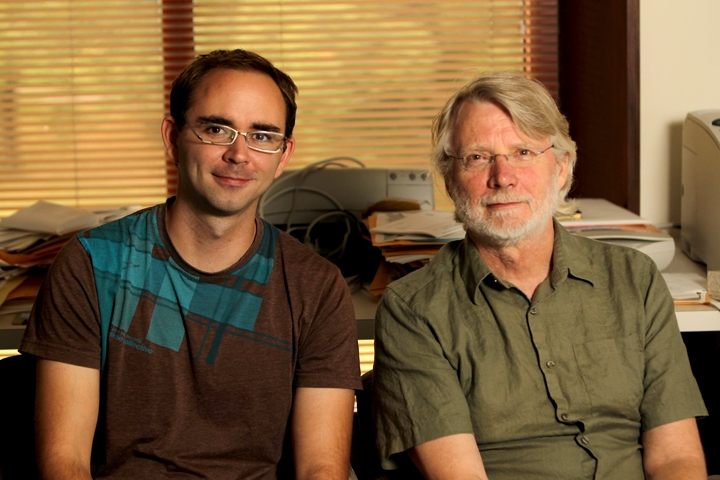 Expert typists are able to zoom across the keyboard without ever thinking about which fingers are pressing the keys. New research from Vanderbilt University reveals that this skill is managed by an autopilot, one that is able to catch errors that can fool our conscious brain.
Expert typists are able to zoom across the keyboard without ever thinking about which fingers are pressing the keys. New research from Vanderbilt University reveals that this skill is managed by an autopilot, one that is able to catch errors that can fool our conscious brain.
The research was published in the Oct. 29 issue of Science.
“We all know we do some things on autopilot, from walking to doing familiar tasks like making coffee and, in this study, typing. What we don’t know as scientists is how people are able to control their autopilots,” Gordon Logan, Centennial Professor of Psychology and lead author of the new research, said. “The remarkable thing we found is that these processes are disassociated. The hands know when the hands make an error, even when the mind does not.”
To determine the relationship between the autopilot and the conscious brain, or pilot, and the role of each in detecting errors, Logan and co-author Matthew Crump designed a series of experiments to break the normal connection between what we see on the screen and what our fingers feel as they type.
In the first experiment, Logan and Crump had skilled typists type in words that appeared on the screen and then report whether or not they had made any errors. Using a computer program they created, the researchers either randomly inserted errors that the user had not made or corrected errors the user had made. They also timed the typists’ typing speed, looking for the slowdown that is known to occur when one hits the wrong key. They then asked the typists to evaluate their overall performance.
The researchers found the typists generally took the blame for the errors the program had inserted and took the credit for mistakes the computer had corrected. They were fooled by the program. However, their fingers, as managed by the autopilot, were not – the typists slowed down when they actually made an error, as expected, and did not slow down when a false error appeared on the screen.
In two additional experiments, the researchers set out to probe awareness more deeply. In the second experiment, they had

the typists immediately judge their performance after typing each word. In the third, they told typists that the computer might insert or correct errors and again asked them to report on their performance.
The typists still took credit for corrected errors and blame for false errors in the second experiment, and still slowed down after real errors but not after false ones. In the third experiment, the typists were fairly accurate in detecting when the computer inserted an error, but still tended to take credit for corrections the computer had made. As with the other two experiments, the typists slowed down after real but not after false errors.
The research is the first to offer evidence of the different and separate roles of conscious and unconscious processing in detecting errors.
“This suggests that error detection can occur on a voluntary and involuntary basis,” Crump, a postdoctoral fellow in psychology, said. “An important feature of our research is to show that people can compensate for their mistakes even when they are not aware of their errors. And, we have developed a new research tool that allows us to separately investigate the role of awareness in error detection, and the role of more automatic processes involved in error detection. The tool will also allow a better understanding of how these different processes work together.”
The research was supported with funding from the National Science Foundation.